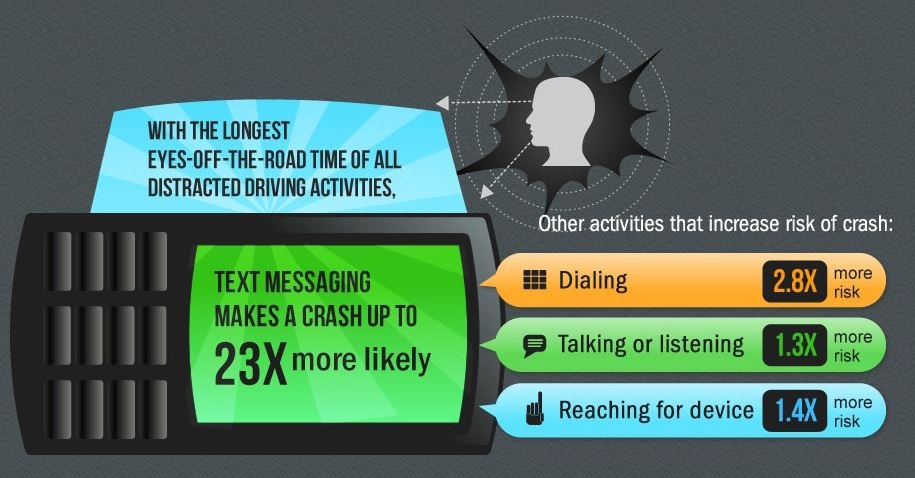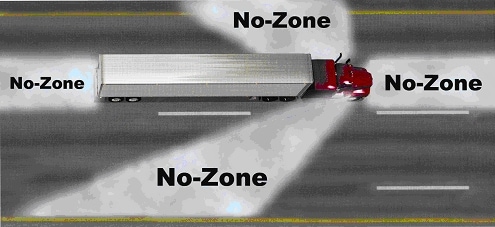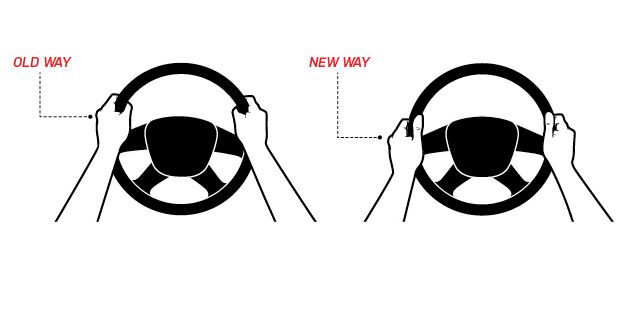17 Safe Driving Tips Everyone Should Know
January 12 2017 - doadmin
 Safe driving tips are something you can never really have enough of. There are tons of people on the roadways today. Being a good, attentive and safe driver is extremely important for everyone out there, especially during the winter. Here are seventeen safe driving tips from the Lia Auto Group that will improve your driving habits.
Safe driving tips are something you can never really have enough of. There are tons of people on the roadways today. Being a good, attentive and safe driver is extremely important for everyone out there, especially during the winter. Here are seventeen safe driving tips from the Lia Auto Group that will improve your driving habits.
Safe Driving Tips #1: Don't Drive Under the Influence
Don't drink and drive. When you drive under the influence, you are not only endangering yourself and anyone in the vehicle with you, you are also putting everyone on the road around you in danger. By driving under the influence not only are you risking your life and the lives of those around you, you are also running the risk of some serious penalties for first time offenders.- You could go to jail.
- You car can be impounded.
- Your driver's license can be revoked.
- You may have to do community service.
- A judge could make you attend substance abuse classes at your own expense.
- The monetary cost of a DUI conviction can cost thousands of dollars in fines and legal expenses.
Safe Driving Tips #2: Obey the Speed Limit
We all know that it is fun to go fast, especially if you have a powerful vehicle. Public streets and highways, however, are not the place to be putting those sick racing skills of yours to the test. Even if you have an open road in front of you, keep it within the speed limit. Excessive speed is one of the main causes of fatalities on the road today.Safe Driving Tips #3: Don't Text While Driving
In the long list of things that can distract you when driving, texting is at the top. The FCC has some astounding figures on the dangers of texting while driving. An astounding 40% of American teenagers say that they have been in a moving vehicle while the driver used a cell phone. According to the Virginia Tech Transportation Institute, your chance of getting in a crash is increased by 23 times while texting and driving. In addition, 11% of drivers from the ages of 18 to 20 years old whom were involved in a traffic accident admit that they were sending or receiving text messages when they crashed. picture from TextingandDrivingSafely.com
picture from TextingandDrivingSafely.com picture from iihs.org
picture from iihs.orgU Drive, U Text, U Pay
Despite all the attention given to the dangers of distracted driving, driving statistics indicate that too many drivers don’t take these dangers seriously. While most of us think of cell phones when we think of distracted driving, there are many different types of distracted driving. Checking GPS and navigation systems, changing the radio station or music, searching for controls in your vehicle, eating, drinking and even experiencing stress and fatigue can play a part in distracted driving. In fact, anything that takes your mind and focus away from driving is considered a distraction. Check out this article our friends over at the Ice Bike put together on "The 25 Scariest Texting and Driving Accident Statistics"! Knowing these driving safety facts can help you avoid irresponsible driving and will make you think twice.Safe Driving Tips #4: Wear Your Seatbelt
The moment you sit in your vehicle, the first thing you should do is fasten your seat belt. Alright, I know this one is a given, but it still needs to be said because I see tons of people that still don't do this. In most states now it is required by law that you wear a seat belt while operating an automobile. I am still surprised when I see someone not doing this. The purpose of your seat belt is to keep you from receiving a traumatic head injury. By not wearing your seat belt, you are leaving yourself open to the possibility of slamming into your windshield or sailing straight through the windshield.Safe Driving Tips #5: Clean Your Windshield
You ever see those cars going down the road on a cold morning with just a little circle about the size of your fist cleared off for them to see through? That always makes you feel safe right? During colder months, give your vehicle a few minutes to warm up and defrost your windows. It is pretty much a given that if you can't see, you can't drive, so take those couple extra minutes and clean off your windshield. Glare from the sun will be increased if you have a dirty windshield and can momentarily blind you. This is especially true at sunrise or sunset.Safe Driving Tips #6: Be Sure You Mirrors are Adjusted Properly
Many drivers do not use their vehicle's mirrors properly because they are not aligned with each other properly. There is actually a specific position that your interior and exterior rear-view mirrors should be aligned that will help to eliminate/reduce blind spots. The Society of Automotive Engineers (SAE) states that your outside mirrors should be adjusted outward far enough that they will slightly overlap the viewing area of your interior rear-view mirror.Safe Driving Tips #7: Look Far Ahead When Driving
Don't look directly in front of you. If there is a hazard in the road in front of you, there may not be enough time to react this if you don't see it ahead of time. You should always be scanning the road roughly a half to a full mile ahead of you. Your peripheral vision only works well at close distances so be sure to keep your eyes moving at all times, scanning the entire area in front of you.Safe Driving Tips #8: Position Your Headrest Correctly
While you may not keep gloves in your glove box these days, your headrest was still designed for one specific task. This one task is to support your head, not your neck. In the event of a rear-end collision, a properly aligned headrest can minimize painful whiplash. In addition, by no means should you ever remove the headrests from your vehicle so you can see better (refer to the section proper mirror alignment above).Safe Driving Tips #9: Avoid the NO-Zone
The NO-Zone applies to larger vehicles such as trucks and buses. Due to their raised position, drivers of these types of vehicles cannot see certain areas close around them. If you are traveling behind one of these, and cannot see the driver of the truck their mirrors, they cannot see you either. There is also a large blind spot in front of big trucks and buses that you should be aware of. In order to stay out of this area when you are traveling in front of them or passing, be sure that you can see the entire front of the vehicle in your review mirror. picture from Drive-Safely.net
picture from Drive-Safely.netSafe Driving Tips #10: Have a Proper Grip on Your Steering Wheel
One of the first things you may have heard when learning to drive was to picture the face of a clock and place your hands at the 10 o'clock and 2 o'clock positions on your steering wheel. Now the recommended and safest way to hold your steering wheel is to place your hands at nine and three. Why the update? When your hands at ten and two, there is a chance that you could be injured by the airbag as it deploys. By having each hand slightly lower on the wheel in the nine and three positions, this risk is greatly reduced. You can also turn the wheel much more effectively in this updated position. picture from PopularMechanics.com
picture from PopularMechanics.comSafe Driving Tips #11: Avoid Driving When You Are Tired
When you are driving fatigue can sneak up on you easily. If you find that you are falling asleep behind the wheel, there are a number of things you can do to stay safe.- Make Pit Stop for Coffee
- Pull over into a safe parking space and take a 20 to 45-minute nap
- Roll down your windows all the way
- Play Loud Music
- Talk to your passenger (If you don't have one, talk to yourself, no one will know)
Safe Driving Tips #12: Maintain a Safe Distance to the Vehicle in Front of You
One of the first things you will learn in defensive driving is maintaining a safe driving distance from the vehicle in front of you. As your speed increases, so does the distance it will take you to stop. Doubling your speed will quadruple the needed braking distance.Safe Driving Tips #13: Consider Other Drivers on the Road
Any time I or my siblings were going anywhere without our parents when we were growing up, my mother would always say, "Watch out for nuts on the road". She wasn't talking about acorns, she was talking about the other drivers. We share the road with a lot of people when driving so it is extremely important need to keep an eye out for what they are doing. You know what they say about assuming right? Well, that absolutely holds true when you are driving. Let's say that you are at a stop and see a vehicle approaching with its turn signal on. You would probably assume that this vehicle will be making a turn soon, right? That is a possibility. They very well could be turning where you expect them to, or they might not. There is always a chance that the driver of this automobile may have completely forgotten about their signal being on. Always consider what other drivers might do and be aware of your surroundings.Safe Driving Tips #14: Remember SMART Driving Acronyms
Acronyms are a great way to remember things. Here are a couple that you should remember every time you get behind the wheel of an automobile.Start SMART
Before starting your vehicle, go over the following SMART checklist.- S - Seatbelt on, seat adjusted
- M - Mirrors adjusted and clean
- A - Air and heat controls set
- R - Radio set
- T - Thoroughly check your surroundings
Spell the Word STOP
When stopping, spell out the word stop, S-T-O-P. Before proceeding remember to also turn your head both ways to look for oncoming traffic. Be sure that you always turn your head to look left, then right, straight ahead, and then left once again before proceeding.Safe Driving Tips #15: Always Drive With Your Headlights On
"I didn't even see them." This is what many motorists will say when recalling an accident they were part of. Motorcycles are required by law to always have their headlight on while in operation for exactly this reason. Vehicles with their headlights turned on are visible at nearly four times the distance of those with them off.Safe Driving Tips #16: Perform Simple Safety Checks
Performing a simple vehicle safety check is something that you should really do every time that you consider driving your vehicle. Start by turning on your headlights and taking a walk around the vehicle to make sure that both of your front and rear headlamps are working. Repeat this process with each of your turn signals. Be sure that your tires are properly inflated as well. While you are doing this, take a peek under your vehicle and make sure nothing is hanging or leaking. If these safety checks are not something that you can perform on a daily basis, please be sure to go over them at least once a month.Safe Driving Tips #17: Leave Early
No one ever said being late is a good thing but speeding is not going to increase your chances of punctuality. Speed does, however, increase the chance that you will arrive at your destination with a pricey speeding ticket, or not at all. What is the end all be all best way to not be late? Leave early. Get yourself going about 10 minutes early and risk getting there early instead of putting yourself and those around you in danger.Other Safe Driving Habits
What other helpful tips and good driving habits do you keep in mind when driving? Let us know below in the comments. Automobile safety starts with the drivers and the more tips the better. Thanks for reading!
Connect with Us

